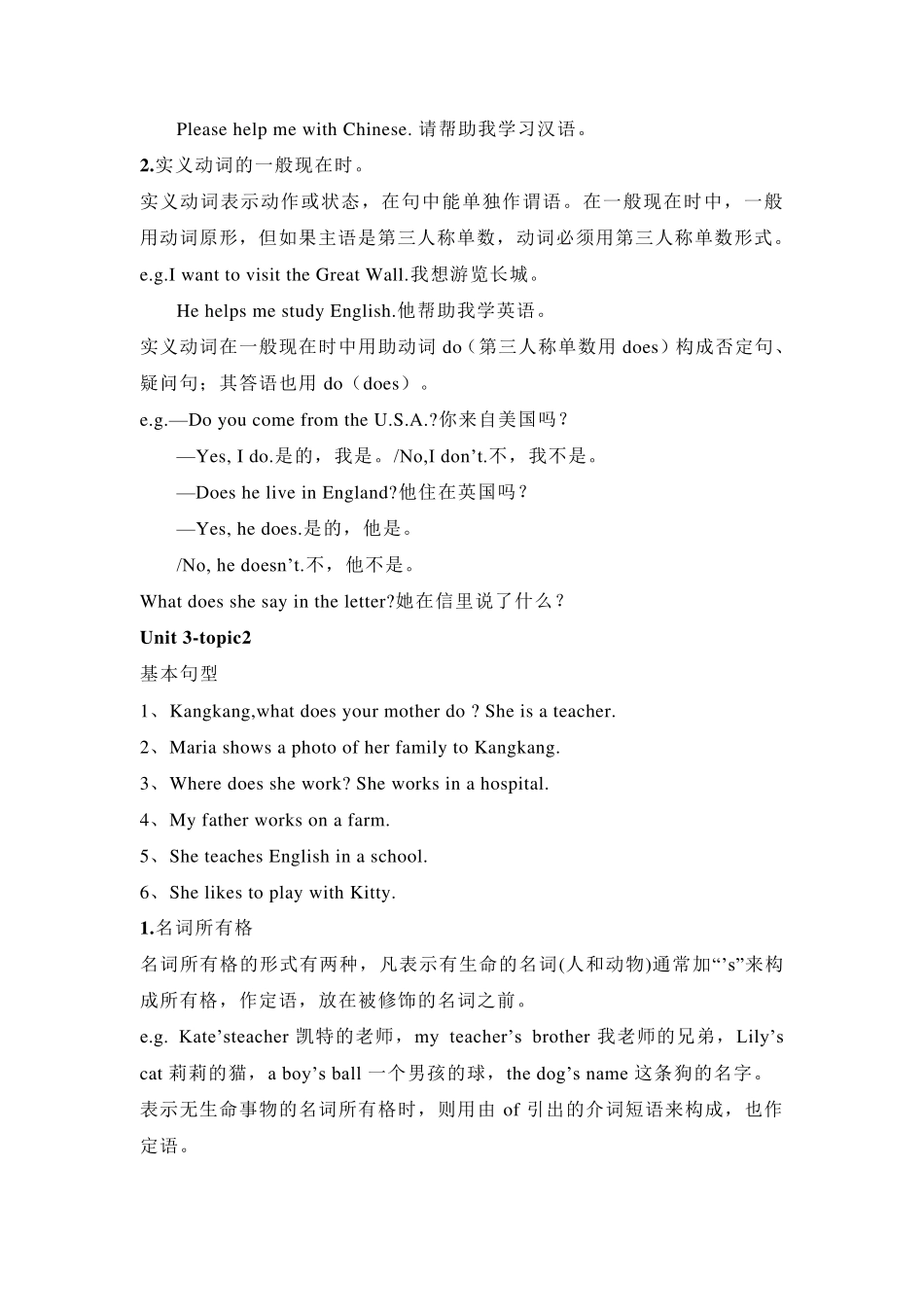Unit3 Getting Together Topic1 基 本 句型 1. Excuse me,could you please tell me your name? Sure,my name is Jane. 2. Could you help me with it? No problem. 3. Does he speak some Chinese? Yes,he does./No,he doesn`t.He speaks English. 4. What does he say in the letter? 5. Jane,Sally and I are good friends. 6. We often help each other. 7. Many students in our class like English a lot,but I like it a little. 8. What about you,Sam? No,I don`t like English at all. 词 组 9. pen pal 10. help sb.with sth. 11. a lot 12. not...at all 13. each other 14. a little 15. very much 16. a lot of 17. every day 人称代词和一般现在时 人称代词代表人或事物,它有人称、单复数、主格和宾格的变化。 第一人称 第二人称 第三人称 主格 I / we you / you he/she/it/they 宾格 me / us you / you him/her/it/them 1.人称代词的主格和宾格。 (1)主格的人称代词作句子中的主语。 e.g.We are good friends. 我们是好朋友。 It is my cat. 它是我的猫。 (2)宾格的人称代词作动词或介词的宾语。 e.g.We all like her very much. 我们都非常喜欢她。 Please help me with Chinese. 请帮助我学习汉语。 2.实义动词的一般现在时。 实义动词表示动作或状态,在句中能单独作谓语。在一般现在时中,一般用动词原形,但如果主语是第三人称单数,动词必须用第三人称单数形式。 e.g.I want to visit the Great Wall.我想游览长城。 He helps me study English.他帮助我学英语。 实义动词在一般现在时中用助动词do(第三人称单数用does)构成否定句、疑问句;其答语也用do(does)。 e.g.—Do you come from the U.S.A.?你来自美国吗? —Yes, I do.是的,我是。/No,I don’t.不,我不是。 —Does he live in England?他住在英国吗? —Yes, he does.是的,他是。 /No, he doesn’t.不,他不是。 What does she say in the letter?她在信里说了什么? Unit 3-topic2 基本句型 1、Kangkang,what does your mother do ? She is a teacher. 2、Maria shows a photo of her family to Kangkang. 3...


